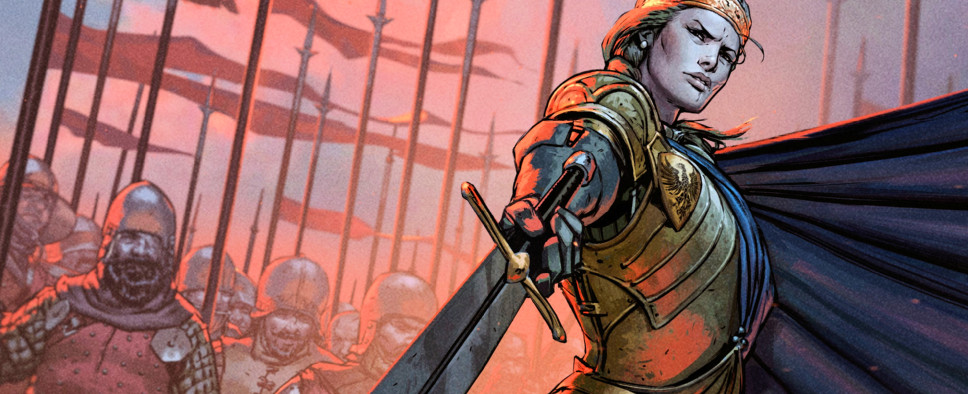Thronebreaker: The Witcher Tales Review
-
Category: ReviewsHits: 21203

Article Index
During your travels, you often have to make decisions. You might buy supplies or confiscate them, fight a monster or ignore it, or execute prisoners or let them go -- or even let them join you. Thronebreaker mines a lot of the same territory as The Banner Saga here, just with far less in the way of ramifications. As an example, at one point you rescue some peasants, and you have to decide if you want to take them with you. If you do, then they steal some food from your stores, but since food isn't one of your resources, the theft is meaningless. Compare this to The Banner Saga, where losing food might cause your people to start starving and dying.
You also meet some named NPCs during the game. These companions become "hero" soldiers that you can use in combat -- for as long as they travel with you anyway. Companions also provide dialogue during interactions, give you somebody to talk to in your tavern, and provide extra options and strategies during battles.
Combat
Combat in Thronebreaker is handled by playing Gwent, the card-game introduced in The Witcher 3. I've played some RPGs with strange battle mechanics before -- including one that used slot machines -- but Gwent works about as well as anything.
With Gwent, each one of your soldiers is represented by a card. Your deck for a battle must contain 25 cards, and those cards are limited in the total power they can possess (at least theoretically; I never came close to reaching the power limit). Hero cards have the greatest power; regular soldiers have less. You can use at most five copies of each non-hero card. Hero cards are unique. This rule guarantees that your deck has some variety.
A battle proceeds in "rounds." For each round, you and your opponent each get a number of cards, and you alternate playing them until both of you pass (or run out of cards). At that point, the side with the higher total power wins. The victor of the battle is the side that wins two out of three rounds -- at least usually. Some battles are played using only one round.
Unlike The Witcher 3, Gwent in Thronebreaker is played with two rows for cards (instead of three), and cards can be played in either row indiscriminately (so there are no melee, ranged or siege cards). Cards also usually have a skill attached to them (instead of just a power), where that skill typically heals your cards or damages your opponent's cards. And finally, the leader of a side takes part in battles, too, but not as a card. Leaders stand on the sidelines and use an ability every few turns (depending on what they have equipped).
Skills are triggered in a variety of ways. "Deploy" skills are triggered when the card is played, "order" skills are triggered when you choose (but usually after a short delay), "loyalty" skills are triggered when the leader of a side uses their ability, and "deathwish" skills are triggered when the card dies. By the end of the game, I had found over 80 different kinds of cards, with a great variety to the types of skills they had and what those skills did. That gave me all sorts of options for how to build my deck, and I enjoyed trying out different combinations.
As an example, one of the cards is the Lyrian Scytheman. He has power 7, and his loyalty skill is that he gains 7 more power. Meanwhile, there is a special card called Reinforcements that plays all copies of a played card from your deck. So I'd play the Lyrian Scytheman, and then Reinforcements to add four more Scythemen, and then every time I had Meve use her ability, my side gained 35 power, which was nice.

